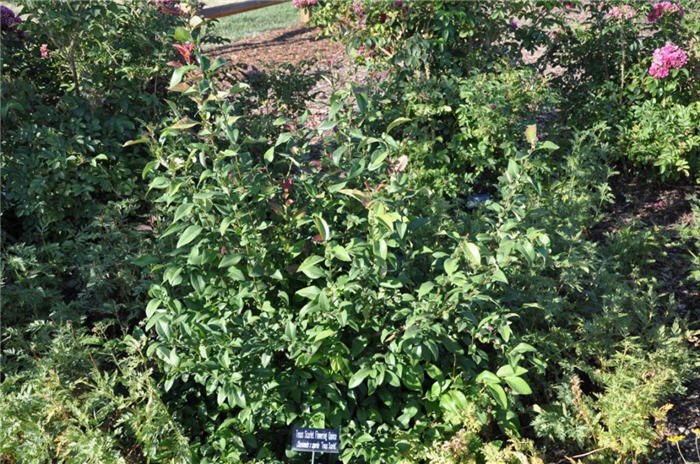| Botanical Name: Chaenomeles japonica 'Texas Scarlet' | |
| Common Name: Texas Scarlet Flowering Quince |

-
Anatomy
-
Culture
-
Design
Plant Type
Shrub
Height Range
1-3', 3-6'
Flower Color
Red
Flower Season
Spring
Leaf Color
Green
Bark Color
n/a
Fruit Color
Green, Yellow
Fruit Season
Fall
Sun
Full, Half
Water
Low, Medium
Growth Rate
Moderate
Soil Type
Sandy, Clay, Loam, Rocky, Unparticular
Soil Condition
Average, Rich, Poor, Well-drained, Moist, Dry
Soil pH
Acid, Neutral
Adverse Factors
Thorns/Spines
Design Styles
English Cottage, Japanese, Mediterranean
Accenting Features
Showy Flowers
Seasonal Interest
Spring, Summer
Location Uses
Background, Shrub Border, Foundation, Walls / Fences
Special Uses
Cascade, Hedge, Small Spaces
Attracts Wildlife
Birds
Information by: Stephanie Duer
Photographer:
Photographer:
-
Description
-
Notes
This quince is has a lower, spreading habit when compared to the species, growing about 3 feet tall and 5 feet wide. It has scarlet red flowers in the spring, followed by greenish-yellow fruit that ripens in the fall and is attractive to birds. Leaves emerge a bronzy-red, and are a lustrous green as they mature. Usefule in the shrub border or infront of taller foundation plants.
Grow in average, medium moisture, well-drained soil in full sun to part shade. Best flowering occurs in full sun. Adapts to a wide range of soil conditions, but prefers well-drained loams. Established plants will tolerate dryish soils, though prolonged drought will affect fruit quality. Plants bloom on old growth, so avoid heavy pruning. Prune selectively as needed in spring after flowering to control size and stimulate growth of flowering spurs which will improve bloom for the following year (although such pruning will reduce fruit production for the current year). Promptly remove root suckers to control possible spread.